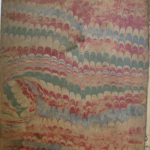
I worked on transcribing the text written by Samuel Tippet. As with most older writings, it was confusing to understand the handwriting and a few words. Tippet might have been an educated man but he did make numerous spelling errors. Understanding the words such as ‘ye’ and ‘and’ were very difficult to understand. To transcribe the writing, I started off by reading, or trying, to read all that I could from the text. As I read it, I started to type what he is saying. If I had a difficulty understanding a word, I skipped that word, planning to come back to it later once I understood the context of the writing.
After writing a few sentences, I read back what I just digitized to ensure it made sense, even if spellings were incorrect. Doing this allowed me to understand Tippet’s point of view. He saw himself as a sinner, as a bad person starting from childhood. He talks about how he was a “bad boy” and got even worse as he grew up. He talks about wishing he had died earlier and talks about how bad he has been during his life. He had been through a lot, being raised by a single mother, as his father died when he was young. Knowing so much about him, I could make sense of a few illegible words or words that were hard to understand. Sometimes, it even helped me guess what he was going to write, what he was thinking. After doing all of this, I could go back and understand why he misspelt many words. I understood why he chose the words he did to describe himself. It helped understand why he was so religious, why he talked so much about Jesus. He was definitely an interesting man.
Click here for the latest Google Docs version of the text.
Bhagawat Acharya is a Computer Science major at Bucknell University. He is interested in working at a cyber security firm after graduating from Bucknell University in 2020. Currently, he is a junior fellow for the Discovery Residential college.